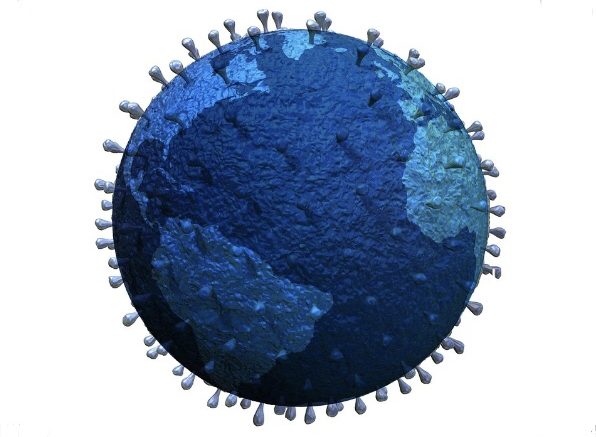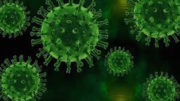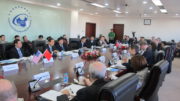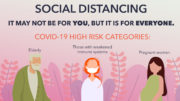Justin Kipness is a senior planning to study biology at Brown University in the fall. Each week, he will trace the Coronavirus pandemic from its origin in Wuhan, China all the way to Stamford, CT. See Part 1 and Part 2 to learn how we got here.
Epidemiologists, virologists, doctors and other medical researchers have long feared this day – a day where a highly infectious and lethal virus has emerged. These characteristics of the novel coronavirus, or SARS-CoV-2, have created disastrous consequences for the modern world.
Hubei Key Laboratory of Natural Medicinal Chemistry and Resource Evaluation, Tongji Medical College, Wuhan, China (30.5 N, 114.4 E)
The lab is situated in the Huazhong University of Science and Technology, a public university in Wuhan that goes by the motto virtue, knowledge, truth and originality. This quest would be to find knowledge, to figure out why the coronavirus is so contagious and what possible measures could be used to stop it.
In the lab, the group of scientists used virtual and digital biological technology to try to unearth what makes this virus so dangerous. What about this novel coronavirus makes it more contagious than the original SARS virus? Why were other outbreaks contained, while this one was revealing itself as one of the most devastating pandemics of modern history? These questions likely dominated the scientists’ thoughts. Not only were they being tasked with studying and proposing life-saving, maybe world-saving cures, but they were researchers at a university in Wuhan. They were not only scientists pipetting fluid and crunching numbers on the computer, but real people with worries about their own safety: maybe they had children to feed or aging parents to look after.
The group studied the structure of SARS-CoV-2, investigating the spike protein of the coronavirus and other features that mediate virus-cell binding and entry. As learned in Part 2, the spike protein can be thought of as a lock the virus uses to enter a human cell. ACE2 can be thought of as a key that guards the human cell. The receptor binding domain (RBD) is like the part of the key with the pattern to the lock. It is the part of the spike protein that facilitates binding.
In the lab, scientists calculated the free-energy between the RBD of the spike protein with ACE2. The result was that more energy existed between the RBD of SARS-CoV-2 and ACE2 than with the original SARS virus and ACE2, according to chinaxiv.org. Essentially, the new coronavirus had a stronger fit in the lock than the SARS outbreak of 2003. The scientists believed this is one of the reasons the novel coronavirus was more contagious.
In addition, the scientists believed there are probably more reasons why the virus is so contagious. The researchers developed a few hypotheses. Viruses infect human cells in order to replicate and cause harm to the body. Therefore, from a molecular standpoint, the easier it is for a virus to enter and infect a cell, the more contagious the virus is.
One interesting hypothesis the scientists proposed was that “…the SARS-CoV-2 Spike protein can also bind to other receptors besides ACE2,” according to chinaxiv.org. The human body is full of many cell types, each of which have many unique and conserved receptors. If the novel coronavirus is able to act as a key to another lock, it allows another route of entry for the virus, making it easier for the virus to infect the cell. This is like how it would be easier for a burglar to sneak into a house with two windows than a house with just one window. The transmission of a virus on a global scale is not only determined by molecular factors of the virus, it is determined by human factors, such as, movement of people and crowding of cities.
Wuhan, Hubei, China (30.6 N, 114.3 S)
Our focus shifts from the lab in Tongji Medical Center back to the city of Wuhan at large. Its population is a couple million more than that of NYC. Before it became the spotlight in the news as the epicenter of this pandemic as discussed in Part 1, Wuhan was known for its steel and automobile industry and a plethora of tourist attractions ranging from the Wuhan Museum to the Longhua Temple, according to Trip Advisor.
The rapid industrialization of Chinese cities in the last century equipped Wuhan with high speed rails and an international airport. It might not be as familiar of a name as Beijing or Shanghai, but Wuhan is certainly connected into the network of globalized cities dotted throughout the planet. Due to the nature of travel in and out of the city, this virus was able to spread across China and across the globe. But how does this virus actually spread? We know it is transmitted from human to human, but how?
According to the World Health Organization (WHO), the “COVID-19 virus is primarily transmitted between people through respiratory droplets and contact routes.” Essentially, when someone who is infected with the virus coughs or sneezes, they release droplets, which can be transmitted to healthy individuals. These droplets can enter the person’s mouth, nose or eyes and then travel to the lungs, enter the cell using ACE2, replicate, and cause disease.
A businessman travels back home from the Wuhan international airport, leather suitcase in hand and a pillow around his neck, ready for the long flight ahead. A parent takes the local subway, stopping at a few stations until they get home to their kids. A doctor travels to her meeting by high speed rail to Beijing. Maybe someone sneezed three feet away in the airport or subway, or she could have contracted it during rounds the previous morning, still seeming asymptomatic. These people travel to work, home or even a restaurant; the disease takes a ride on the network of transportation, taking advantage of the very fact that makes our globalized world so vibrant and unique. The perfect storm of globalization, viral mutation and complete happenstance made the scientists’ fear become a reality – a pandemic was born.





